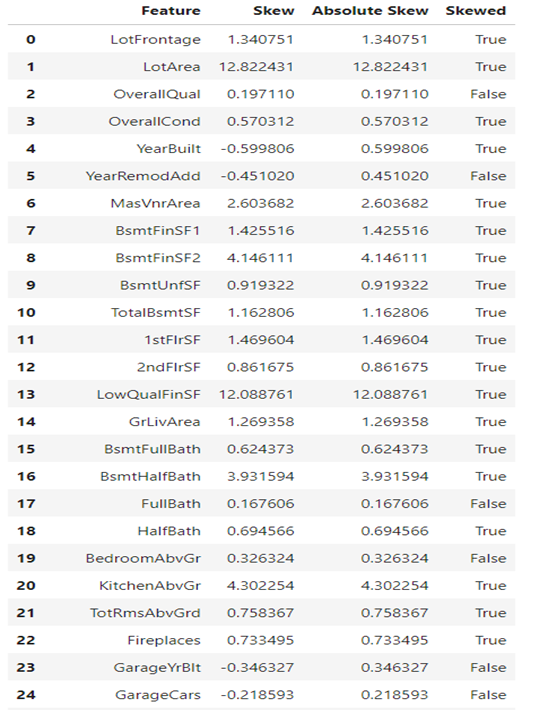House Price Prediction
Abstract:
The House Price Index (HPI) is a
popular tool for estimating changes in housing prices. Because housing prices
are strongly correlated with other factors like location, area, and population,
predicting individual housing prices requires information other than the HPI.
There have been a significant number of papers using conventional methods of
machine learning to correctly predict housing prices, however they rarely
concern themselves with the performance of specific models and ignore the less
common and still complex models. As a consequence, in order to investigate the
differences between several advanced models, this paper will use both
traditional and modern machine learning strategies to look into the various
effects of features on prediction techniques.
Short introduction:
We decided to enter Kaggle's
advanced regression methods competition, taking you along for the ride. If
you're new to machine learning and would like to see a project from start to
finish, try sticking around. We'll go over the steps we've taken while also
attempting to deliver a basic course in machine learning.
Objective:
The goal of the competition is to
forecast home sales prices in Timisoara. A training and evaluating data
set in csv format, along with a data dictionary, are provided.
Training: We have many examples of
houses with many features that describe each facet of the house through our
training data. Each house's sale price (label) is given to us. The training
data will be used to "teach" our models.
Testing: The sample data set
contains the same number of capabilities as the training data. Because we are
attempting to predict the sale price, we exclude it from our test data set. After
we have constructed our models, we would then run the best one on the test data
and publish it to the Kaggle leaderboard.
Task:
Machine learning tasks are typically
classified into three types: supervised, unsupervised, as well as
reinforcement. Our task for this competition would be supervised learning.
the type of machine learning
task presented to you is easy to identify based on the data you have and your
goal. We've been provided housing data with features and labels, and we're
supposed to predict the labels for houses that aren't in our training set.
Tools:
For this project, we used
Python as well as Jupyter notebooks. Jupyter notebooks are popular among data
scientists because they are simple to use and demonstrate your work steps.
In general, most machine
learning projects follow the same procedure. Data ingestion, data cleaning,
exploratory data analysis, feature engineering, and finally machine learning
are all steps in the process. Because the pipeline is not linear, you may have
to switch back and forth between stages. It's important to note this because
tutorials frequently lead you to believe that the procedure is much cleaner
than it actually is. Bear this in mind because your first machine learning
project may be a disaster.
Data cleaning:
First we make the difference between
null values as missing values or as a meaning. Using the mode to fill the
categorical variable
Impute using a constant value and Impute
using the column mode:
we will start cleaning the numerical
data by filling missing values, using knn amputation
take column names of the numeric
features then see skew for each column and log transform for skewed features
Output:
Exploratory Data Analysis (EDA):
This is frequently where our data
visualization journey begins. EDA throughout machine learning is used to
investigate the quality of our data. Labels: I used a histogram to plot the
sales price. The allocation of sale prices is skewed, which is to be expected.
It is not uncommon to see a few reasonably priced houses in ones neighborhood.
Input:
Output:
Conclusion:
A.I it's the most effective way to improve and predict costs with high
precision. The data is from Mumbai and the method is the decision tree. The
Decision tree regressor gives an accuracy of 89%.
The house price prediction helps sellers (that own a property or build one)
and buyers to put a fair price on the house. The variables that change houses
prices can be: number of rooms, age of the property, postal region and so on.
In this paper, 2 more variables are added: air quality and noise pollution.
The system design and architecture of this article contains: collecting the
data from different websites, data processing for cleaning the file, having two
modules: training set and test set, testing and integrating with UI in the end.
Between Multiple straight backslide,
Decision Tree Regressor, and KNN, the Decision Tree Regressor fitted their
dataset the best. The decision tree regressor recognizes quality components and
trains a model like a tree to forecast data in the future to provide a massive
result. Right after building the model and giving the result, the accompanying
stage is to do the consolidation with the UI
The implementation consists in data
processing, factual representation of dataset, visualization by using
Matplotlib and fitting the model by using the regressor.
In the end, they displayed the
design of anticipated versus genuine costs with the precision of expectation.
the Decision tree AI estimate is
utilized in this work to develop an assumption model for predicting implicit
selling costs for any land property. Fresh parameters like air quality and
wrongdoing rate were linked to the dataset to aid in predicting expenses even
more accurately.
https://kalaharijournals.com/resources/APRIL_15.pdf
References
[1] Burkov, A (2019). The Hundred
Page Machine Learning Book, pp.84–85










Niciun comentariu:
Trimiteți un comentariu